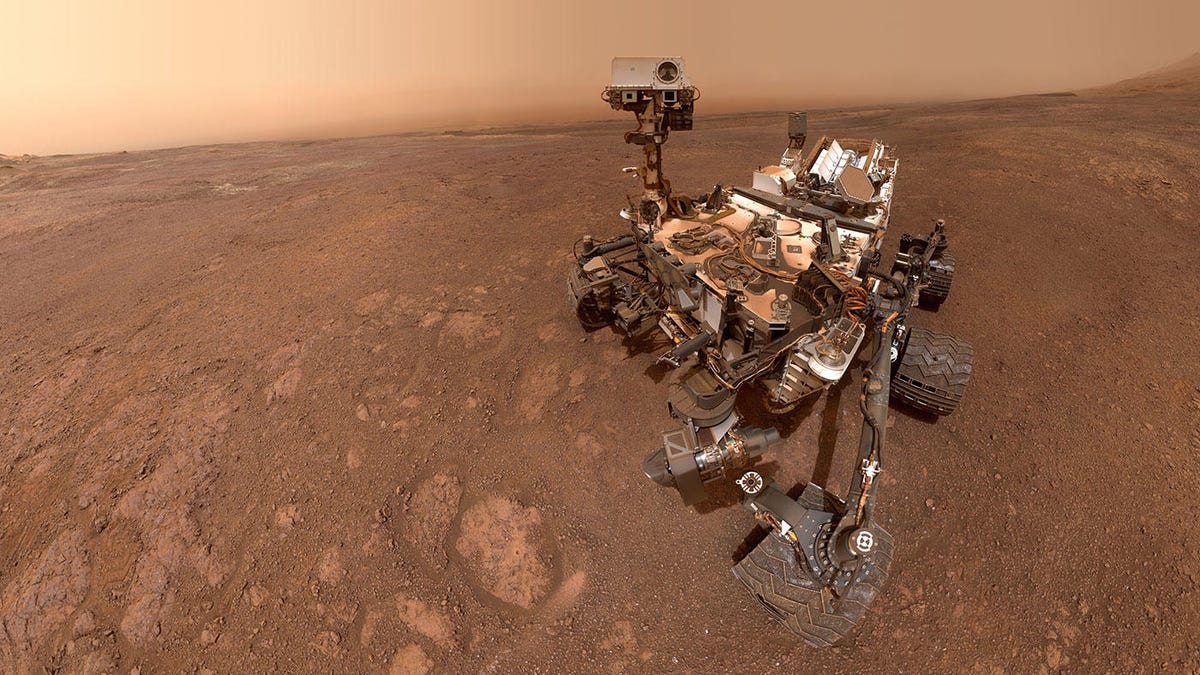NASA's Curiosity rover makes unexpected discovery on Mars mountain
As the intrepid rover climbs Mars Mount Sharp, it makes a curious discovery.

NASA's intrepid Martian explorer, Curiosity, is slowly crawling its way up the side of the three mile (~five kilometre) high Mount Sharp on the surface of the red planet.
Navigating the Martian surface can be risky (just look at the damage done to Curiosity's wheels!) but the rover's accelerometers and gyroscopes make the journey a little easier. And scientists have realized those instruments can be recalibrated to help Curiosity measure Mars' gravity.
The research, published in Science on Jan. 31, describes how NASA collaborators at research universities such as Johns Hopkins were able to take gravity measurements by repurposing data from Curiosity rovers exquisitely precise sensors.
Curiosity, which landed on Mars in 2012, is equipped with accelerometers and gyroscopes, just like a smartphone. Those sensitive devices allow measurement of movement and orientation in your phone, but in Curiosity they are turned up to 11, allowing scientists and engineers back on Earth plenty of data to orient and move the rover.
But as luck would have it, Curiosity's accelerometers can also be used as a gravimeter -- an instrument that can measure gravity -- to reveal secrets about Martian geology. Even when Curiosity is stationary, the accelerometers are constantly detecting the slight changes in gravity on Mars, as Curiosity rolls further up Mount Sharp. By using over 700 measurements from the accelerometers, the team has been able to unravel some of the mysteries of the mountain.
"This study represents the first gravity traverse and measurement of rock density on Mars," said Nicholas Schmerr, a geologist at the University of Maryland and co-author on the project.
Mount Sharp is unusual because it sits within a huge crater, known as Gale Crater, on Mars. How a mountain came to be inside a crater still perplexes scientists, with some believing it may have been filled in with sediment which was slowly blown away over millions of years. That activity would make the lower layers of Mount Sharp dense with compact sediment, and Curiosity would see increased gravitational measurements.
Curiously, the research team found that there was less additional gravity being exerted on Curiosity as it rolled further up Mount Sharp. Thus, the layers of rock that make up the mountain aren't as dense as was once expected and the theory that Gale Crater was once filled with sediment is unlikely.
"There are still many questions about how Mount Sharp developed , but this paper adds an important piece to the puzzle," said Ashwin Vasavada, Curiosity's project scientist at NASA's Jet Propulsion Laboratory.
NASA's other Mars rover, Opportunity, has been silent since a planet-engulfing dust storm rendered it mute in June 2018. On January 25, NASA tried to contact the lost rover another time, as the planet approaches winter that may cause irreparable damage to the robot.

